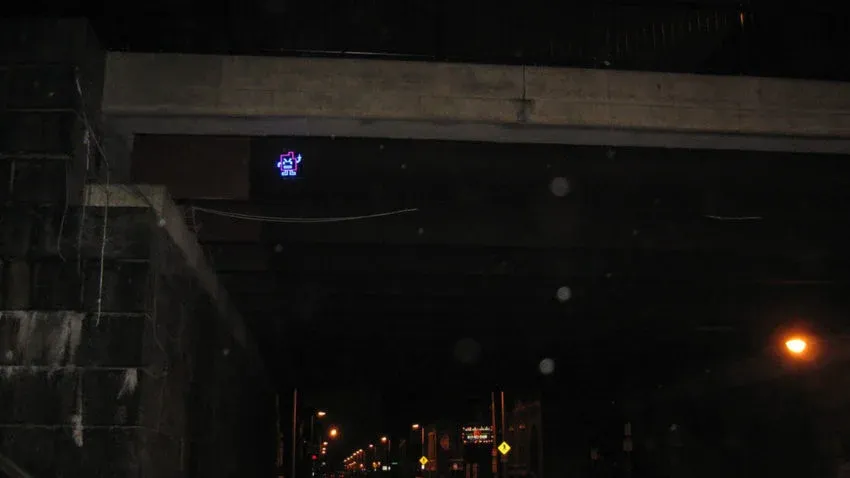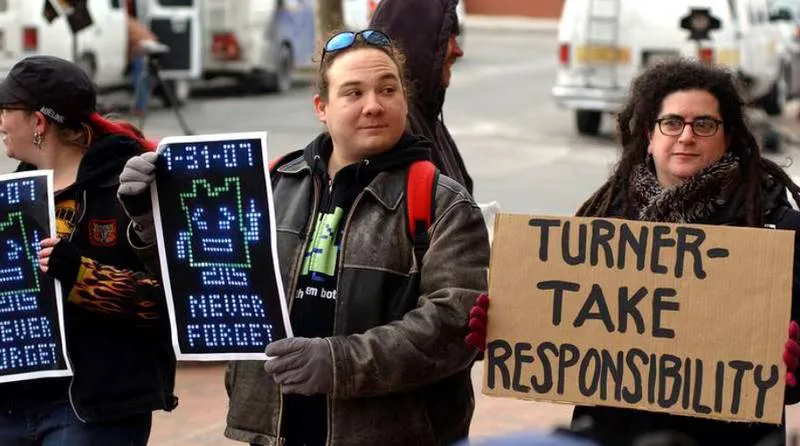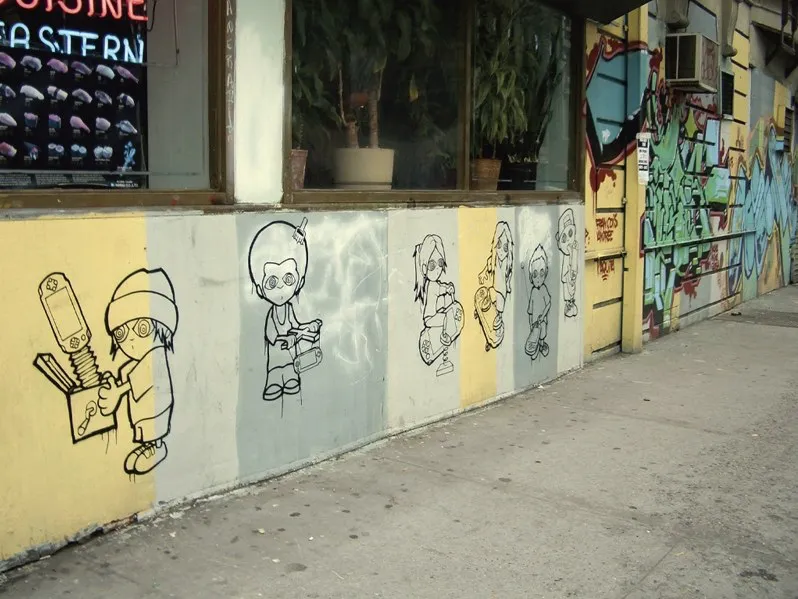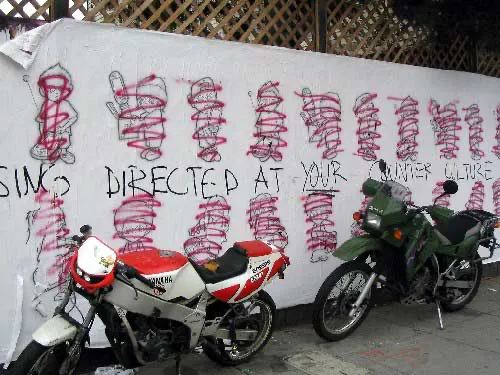Guerrilla marketing fails: 8 promising campaigns that flunked
A good guerrilla marketing campaign can do wonders for your business, big or small.
When executed correctly, it can be a cost-effective way to raise brand awareness, reach broader audiences, stand out from the competition, and generate buzz around your brand.
But with all its numerous advantages considered, it can also be a dangerous game to play.
Even the most minor thing that goes wrong or remains unaccounted for can cause monstrous reputational damages and make your brand go viral for all the wrong reasons. So, before you launch your unconventional guerrilla marketing campaign, you need to consider all potential risks, complications, and implications.
In this article, we’ll look at the 8 most notorious guerilla marketing examples from both the distant and more recent past, deconstructing each of them to understand why ideas that looked good on paper ended up being a disaster for the brands that brought them to life.
Read on to learn the key takeaways and ensure the success of your future guerrilla marketing campaigns.
8 guerrilla marketing fails and what they teach marketers about unconventional marketing
1. Boston Mooninite Panic (2007)
Chances are, you’ve heard about this one — the 2007 Boston Mooninite Panic is, by far, the most well-known example of a great guerrilla marketing campaign gone horribly wrong.
But in case you’re unfamiliar with this Cartoon Network marketing stunt that caused a nationwide disturbance… Fasten your seatbelts, folks, because we’re about to take a wild ride down memory lane and revive the events of early 2007.
It all started on a freezing cold night when Turner Broadcasting System, Inc., the parent company of Cartoon Network, hired a marketing agency to promote one of their shows, Aqua Teen Hunger Force, with the help of guerilla marketing.
The plan? Put up little, glowing devices that displayed characters from the cartoon, the Mooninites, all over the city.
Sounds like a solid idea, right? On paper, yes. And for a few weeks, it was.


(Source)
But things took a disastrous turn when someone mistook these little guys for bombs and called the police.
Cue absolute mayhem.
Boston and the surrounding cities of Cambridge and Somerville went into full-on panic mode: the bomb squad was called in, and major roads and bridges were shut down. The situation quickly escalated as the devices were identified as “hoax devices,” leading to the arrest of two hapless guys who were responsible for putting them up in the first place.

(Source)
In the aftermath, Turner Broadcasting had to cough up a staggering $2 million in compensation for the chaos they caused. And the marketing agency behind this fiasco? Let’s just say they were sent packing, never to be seen or heard from again.
Why did it flop? Planting anything that even remotely resembles IEDs in public areas, even if they’re just LEDs, is a one-way ticket to the marketing hell. Neither regular citizens nor officials treat those things lightly, and playing on people’s fears can make things go awry pretty quickly.
Key takeaways: The 2007 Boston Mooninite Panic is a cautionary tale of epic proportions, illustrating the need for careful consideration and adherence to city guidelines in marketing campaigns.
2. Sony PSP Graffiti Ad (2005)

(Source)
The next example is far less destructive than the Boston Mooninite Panic (it’s difficult to top that one). Nonetheless, it still stirred up a hornet’s nest of controversy and made the brand behind the marketing stunt pay fines to clean up its consequences.
Back in 2005, the tech giant Sony decided to promote their latest gaming device, PlayStation Portable (PSP), in a somewhat unconventional way.
The brand hired a bunch of graffiti artists to spray-paint images of kids playing with the gadget on random buildings in San Francisco, New York, Chicago, Atlanta, Philadelphia, Los Angeles, and Miami.
The campaign turned out to be quite polarizing, with some praising it as an innovative way to showcase the device’s capabilities and appeal to a younger audience, and others criticizing it as commercializing street art.
Why did it flop? Even though Sony, allegedly, paid the building owners to host the graffiti on their walls, many people still regarded the campaign as an act of vandalism.
Besides, following the news that Sony music CDs infected customers’ computers with security-hole-inducing spyware earlier that year, many felt like the stunt was Sony’s attempt to “buy the credibility of street art.”
In multiple locations, locals protested Sony’s effort to emulate a grassroots campaign by painting over graffiti:


(Source)
Key takeaways: Be genuine when crafting a guerrilla marketing campaign.
3. Airbnb’s Great Wall of China Promotion (2018)
Another brand that tried to capitalize on culture is Airbnb.
Back in 2018, they came in hot with a killer promotional campaign, “Night at the Great Wall.” The promotion was designed as part of the broader “Night At” campaign and aimed to hook up four lucky people and their guests with the ultimate experience — a sleepover in a custom-built “home” located within one of the towers of the Great Wall.




(Source)
As a UNESCO-listed structure with major historical and cultural significance, the Great Wall is usually off-limits to the masses. But not for the chosen few who snagged this once-in-a-lifetime opportunity.
Unfortunately, the plan was never set in motion.
Airbnb had to call the campaign off after receiving backlash from Chinese authorities and cultural conservationists that felt it would be disrespectful to allow such commercial use of a cultural heritage site.
We deeply respect the feedback we have received. We have made the decision to not move forward with this event.
Airbnb
Why did it flop? There were a number of reasons, really. Here are the three most notable ones…
Many Chinese people saw the idea of turning the Great Wall into a tourist attraction and a place to sleep as commercializing and trivializing a site that is a symbol of China’s national pride and identity.
On top of that, people trampling the previously off-limits site could potentially damage The Great Wall, causing erosion and leading to irreversible harm to the site.
Finally, Airbnb failed to navigate the complex and ever-changing rules and regulations around tourism and cultural preservation in China. This led to logistical and regulatory issues.
Key takeaways: Mind the cultural context of your campaign. The last thing you want to do is to be disrespectful when launching a campaign in another country.
4. Mountain Dew’s Dub the Dew (2012)
Mountain Dew’s Dub the Dew campaign was a textbook example of how a seemingly simple marketing initiative could go horribly wrong. The brand was looking to create buzz for its new green apple flavor and thought it would be a great idea to crowdsource the name through social media. What could go wrong, right? Well, the answer is everything.
The campaign quickly descended into chaos when pranksters, trolls, and racists hijacked the contest with some of the most offensive and inappropriate names imaginable. We’re talking “Gushing Granny,” “Fapple,” and “Hitler did nothing wrong,” to name just a few. It was a disaster, and it left Mountain Dew with a PR nightmare on its hands.
Mountain Dew received an avalanche of negative publicity and massive backlash from consumers and advocacy groups. As a result, the brand had to issue a public apology and retract the contest.

Why did it flop? First off, the brand’s marketing team failed to anticipate the potential for online trolls and pranksters. Second, they didn’t have any system in place to filter out the offensive entries. And third, they were slow to react to the situation, allowing the inappropriate entries to remain on the website for far too long.
Key takeaways: Always anticipate potential risks and take measures to mitigate them. If things do go south, react quickly and decisively to negative feedback.
5. Vodafone’s Rugby Stunt (2002)
In 2002, Vodafone’s guerrilla marketing campaign aimed to shock and awe, but instead, landed with a thud.
The ill-conceived campaign involved two streakers dashing across a rugby field with “Vodafone” scrawled on their bare backs (and fronts) at the Bledisloe Cup decider match in Sydney, Australia.

Fun fact: The match was played at the Telstra Stadium, the stadium named after Telstra, Vodafone’s biggest rival in Australia.
While the spectacle did attract media attention, it quickly backfired, with critics labeling the stunt as vulgar and disrespectful to players and fans alike.
The campaign wasn’t orchestrated entirely by Vodafone. The then-head of Vodafone NZ, Grahame Maher, admitted in an interview with The Daily Telegraph that he was approached by a man saying he was going to pull an illegal stunt at the match which would give Vodafone publicity. Mr. Maher even agreed to pay any fines resulting from the publicity stunt but he claimed he didn’t know what the stunt was ahead of the game.
We said whatever you want to do, if it is good for us we would love to be involved.
Grahame Maher, head of Vodafone NZ in 2002
And yet, Vodafone had to take full responsibility for the game disruption.
Why did it flop? Streakers disrupting major games on live TV is never a good idea. Obviously.
Key takeaways: Shock tactics can easily backfire — think twice before trying to make a sensation. Besides, for the sake of your brand’s reputation, handle the planning yourself. Otherwise, you risk getting slammed with unpleasant surprises and (potentially) lawsuits.
6. Snapple’s Record-breaking Ice Popsicle (2005)
In the summer of 2005, Snapple wanted to celebrate the launch of its newest product in the range, frozen Snapple juice, by breaking the Guinness world record. Ambitious, right?
To do that, the beverage brand decided to mount a huge (we’re talking 25-foot-tall, 17½-ton) ice popsicle right in the middle of New York City.
In June. Oh, snap!
You already know where this is going, don’t you?
The campaign became a reputational (and literal, for all it matters) disaster before the brand could even erect the popsicle.
Unable to withstand the hot summer sun, the popsicle melted way earlier than anticipated, flooding Union Square in downtown Manhattan with kiwi-strawberry-flavored goo. What a sticky situation (pun intended).
To avert the consequences of Snapple’s failed attempt at guerrilla marketing, firefighters had to close off several streets and use hoses to wash away the sugary fluid.

Why did it flop? Snapple failed to delight people and stun them with an outlandish edible statue in the middle of NYC. All they managed to do was irritate pedestrians.
This guerrilla marketing campaign undermined the intended impact of the giant popsicle as a symbol of summer refreshment. Instead, the melting and collapse of the popsicle became a source of ridicule and negative press for the brand, with many consumers pointing out the irony of a brand known for its cold drinks being unable to keep a giant ice popsicle from melting.
Key takeaways: Breaking a Guinness world record is a great guerrilla marketing tactic that will definitely generate lots of publicity. But affecting people in the process will give the conversations around your brand a slight negative undertone.
7. Fiat’s Love Letters (1994)
In 1994, the Italian car manufacturer Fiat came up with an unconventional guerrilla marketing idea to advertise its newest model Fiat 500 to its female audience in Spain.
For this campaign, the brand created and distributed 50,000 personalized love letters that were “supposed to play with factors like intrigue, love, and romanticism which surrounds our car advertisements.”
All written on pink paper, letters contained messages like…
- “Yesterday we saw each other again. We met on the street and I noticed how you glanced interestedly in my direction. I only need to be with you for a couple of minutes, and even if it doesn’t work out, I promise you won’t regret our little experience together.”
- “I’ve been watching you for a while now.”
- “I don’t know how to tell you this, but I’m in love with you.”
And that’s it. No logo, no address, no nothing. Creepy, right?
The brand planned to send a follow-up letter with a signature, brochure, and an invitation to the nearest Fiat store four days after the first one. But… A lot of things can happen in 4 days.
Why did it flop? The campaign gave off major stalker vibes and made thousands of women around Spain anxious, scared, and tense.
Some of Fiat’s love letter recipients refused to leave their houses and reported to the police.
Moreover, the guerrilla marketing campaign had even sparked up jealousy among couples as partners would suspect infidelity.
Key takeaways: Run by all the risks related to your campaign before the launch. Guerilla marketing is no easier than any other marketing campaign. It should be handled with great attention to detail and with consideration for all those involved. After all, it is also a public image you’re risking.
8. Tubi Interface Interruption Super Bowl commercial (2023)
Another guerrilla marketing campaign that meant well but received public backlash (as it caused a rise in the number of quarrels and domestic violence cases) is the Tubi 2023 Super Bowl Interface Interruption commercial.
The streaming service decided to trick all people watching Super Bowl 2023 into thinking they accidentally switched the channel and opened the Tubi app.
Why did it flop? Technically speaking, the campaign wasn’t a complete failure. A lot of people loved it and thought it was clever — it even ended up on the list of the best Super Bowl 2023 ads.
Nonetheless, it was problematic as it failed to recognize the potential dangers of the seemingly innocent prank.
According to studies, domestic violence rates are already incredibly high during big sports games, and a campaign like that could easily spark even more incidents across the country.
Key takeaways: Think about the negative consequences of pranks.
Eight guerrilla marketing campaigns later, you should have a rough idea of what not to do when planning a publicity stunt.
But if you’re interested in learning more about the safe ways to stand out from the competition, feel free to check out our article and download the free e-book.




















